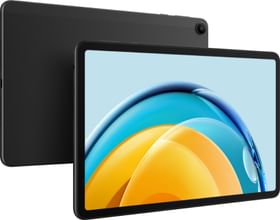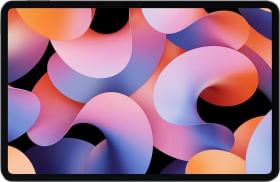In the current setup, it is almost impossible to imagine our lives without Wi-Fi connectivity. I still remember a summer when I had a whale of a time with a 2Mbps connection, but our craving for data has increased exponentially.
It’s not just the need for higher throughput to cater to 4k streaming and to download big files. Our Wi-Fi faces different sorts of challenges altogether, most of which are related to dealing with a vast number of client devices. In 2020, an average home has about 12 connected devices, and by 2022 this number is expected to increase to 50.
These needs are addressed in the new WiFi standards – Wi-Fi 6 and WiGig -that we will be hearing a lot more frequently this year. So, if seamless connectivity ranks high on your priority list, here are a few things you need to know about WiFi 6 and WiGig before you buy a new Router or a new phone.
What is Wi-Fi 6? Is it the same as Wi-Fi 802.11ax?
The 802.11ax is the updated version of the existing 802.11ac standard. This new standard of Wi-Fi communication will span over the existing 2.4GHz and 5GHz bands and, at the same time, carries support to include additional bands between 1 GHz and 7 GHz.
Instead of focusing on peak data transfer rates, the standard focuses on improving average and worst-case performance to make a realizable impact with real-world usage, taking into account the increasing client devices and congestion.
Wi-Fi Alliance which deals with the certification of all the new WiFi protocols decided to make things simpler by giving an alias to this new standard as Wi-Fi 6. So, yes, the two are the same.
In a nutshell, the Wi-Fi 6 is the next generation High-Efficiency Wireless communication standard that offers faster network speeds with better throughput and aims at tackling the issue of congestion arising due to the exploitation of the existing spectrum due to increase in the number of connected devices.
Wi-Fi 6 handles this issue by increasing the network capacity by including more frequency spectrums into the network.
Wi-Fi 6 uses Orthogonal Frequency Division Multiple Access (OFDMA) to make efficient use of the bandwidth allocated for each transmission. This is the same technique that has been used in systems like Cellular LTE (4G) transmission. In OFDMA, all the devices connected to a network use a single channel at different frequency bands for transmission, unlike the previous standards in which each device had its own channel for communication. This implementation ensures that there is no bandwidth wasted with each transmission and improves efficiency by 4 times.
Wi-Fi 6 or WiFi 802.11ax has improved MU-MIMO (Multi-User Multiple Inputs Multiple Output) technology support as compared to the last generation WiFi 802.11ac. While Wi-Fi 802.11 ac supported up to 4 devices for downlink, Wi-Fi 6 will allow 8 clients connected simultaneously for downlink and uplink.
Wi-Fi ax also integrates a number of features to improve outdoor performance, or for extending the range. One of the most important of these is the new packet format, where the most sensitive field is repeated for reliable communication.
The other vital aspect which this standard aims at is reducing battery drain. Unlike the previous versions in which devices used to stay awake while waiting for transmission, Wi-Fi 6 allows the transmission to be scheduled which lets the devices to sleep for longer periods thereby significantly improving battery life.
ALSO READ: What is 5G? Here is What To Expect From The Next Decade of Wireless Communication
All in all, this new generation of Wi-Fi not only aims at improving the speed and latency but also at offering a more robust connection for deployment in congested areas.
While these technologies may not greatly enhance your home Wi-Fi experience, they’re definitely great for public Wi-Fi networks. The Wi-Fi Alliance mentions the ideal use cases as retailers, apartment blocks, transportation hubs, and stadiums.
Advantages of Wi-Fi 6 or Wi-Fi 801.ac
- Faster speed.
- The new packet format and other changes will help extend the Wi-Fi range and improve outdoor performance.
- The Wi-Fi 6 is also optimized to reduce battery drain by scheduling the wakeup of clients attached to an access point.
- The standard integrates the latest state-of-the-art radio technologies that are also proposed for 5G. Using these technologies, Wi-Fi 6 can make better use of available communication bandwidth, which results in more efficient communication.
What is Wi-Fi 802.11ay or WiGig?
Coming to the second new standard which is going to see its launch in 2019 is the IEEE 802.11ay which will be a new addition to the already existing 60GHz WiGig protocol. This new standard is the successor to the IEEE 802.11ad which paved the way for the commencement of the 60GHz network channel for Wi-Fi communication.
This spectrum of communication at 60GHz uses the mmWave for transmission. We already know that mmWave is known for its unparalleled coverage performance but falls flat when it comes to penetrating through structures (which is why it is used for short-distance Wi-Fi applications like wireless VR headsets, fiber-to-home cables, etc.).
To get a broader picture of the bandwidth used for WiGig communication, we can say that WiGig is divided into four spectrum channels, each with more bandwidth capacity than all the regular Wi-Fi channels combined (that operate at 5GHz and 2.4GHz frequencies). The channel bonding feature of 802.11ay combines four channels of 802.11ad to provide 8.64GHz of composite bandwidth.
This technology is touted to act as a virtual fiber in the coming days by replacing the existing wired optical fiber network. This can significantly reduce the costs incurred during the installation of underground Fiber-To-Home cables. It might also be used to support mobile communications which are expected to undergo a major overhaul with the 5G network. Since 5G communication also works majorly in the high-frequency spectrum, the WiGig network of base stations can compensate for any hindrance in the mobile connections.
WiFi 6 vs WiGig: What’s the difference?
Now that we are through with both the new standards of WiFi networks, let us take a look at what distinguishes them from one another. Both these technologies are in line with our desires to hit multi-gigabit speeds wirelessly. We can finally get to experience 4K streaming of content without any glitches and download heavy files within seconds.
The primary difference between these networks is that the higher frequency waves (WiGig) travel longer distances but attenuate quickly upon obstruction from obstacles while the low-frequency waves cover relatively shorter distances but can penetrate through walls and obstructions. Keeping in view the pros and cons of each of these technologies, we can expect 802.11ay to be used as the network backbone to replace the fiber network placed outside the houses or for peer-to-peer communication. The 802.11ax or Wi-Fi 6, on the other hand, can be used for Wi-Fi transmission within homes where the signal needs to be delivered to multiple devices by penetrating through walls for the reception.
IEEE has been working on Wi-Fi 6 for a while and equipment supporting these new Wi-Fi standards is already available commercially. The information regarding what will be coming in wave 1 and wave 2 of Wi-Fi 6 standard is already out there.
Qualcomm’s latest Snapdragon series 700 and series 800 chipsets (including Snapdragon 855 onwards) support Wi-Fi 6 and WiGig.
Is Wi-Fi 6 Worth upgrading to?
There are a few things to consider before deciding if one should upgrade to Wi-Fi 6 or not. The first one is, do you really need Wi-Fi 6? If your current Wi-Fi is working well then probably you don’t need to upgrade it. Most of our internet speeds can be served adequately by Wi-Fi 5 and if the difference between ethernet cables and Wi-Fi isn’t much then you don’t need to upgrade.
WiFi 6 has other benefits too apart from speed. It focuses on IoT smart home devices as well and if you have many of these devices on your Wi-Fi then the upgrade will be useful for you. But make sure that all those devices have Wi-Fi 6 support so that they can work with it.
Wi-Fi 6 can be useful where it is an office/public setup that has lots of users. Or if you are buying a new Wi-Fi setup then go for Wi-Fi 6. Keep in mind that WiFi 6 will cost you more than Wi-Fi 5.
How to Upgrade from WiFi 5 to WiFi 6?
You need to have an internet connection with speeds high enough to require a Wi-Fi 6 upgrade. Since it’s new, you will need a new router like TP-Link Archer AX73 or Netgear Orbi Wi-Fi 6 System to get started.
If you are upgrading to a larger area network, opt for a mesh system. A mesh WiFi 6 upgrade needs a mesh system that includes WiFi devices spread across the area for better coverage. The routers have to be placed in such a position that speeds maximize.
All this is useful only if you have devices that support Wi-Fi 6. Many new phones, laptops, tablets, and other electronics do support Wi-Fi 6 but many others don’t. In that case, upgrading will not give 100% results as your devices won’t be able to take complete advantage of it.
FAQs
Q: Is Wi-Fi 6 backwards compatible?
A: Yes, Wi-Fi 6 is backwards compatible and your older Wi-Fi devices will work with Wi-Fi 6 networks.
Q: Is Wi-Fi 6 better than mesh Wi-Fi?
A: Mesh Wi-Fi is a type of Wi-Fi setup and you can get it with Wi-Fi 6 support as well. Whichever one is better for you will depend upon your usage scenarios. If you want to cover a large area with Wi-Fi, a mesh Wi-fi 6 setup will be better than a regular Wi-Fi 6 setup.
Q: What is Wi-Fi 6E?
A: Wi-Fi 6E is a follow-up to Wi-Fi 6 that uses the 6GHz band, as opposed to only the 2.4GHz and 5GHz bands Wi-Fi has traditionally used.
Q: Is Nest Wi-Fi Wi-Fi 6?
A: The current version of Nest Wi-Fi does not support Wi-Fi 6.







































